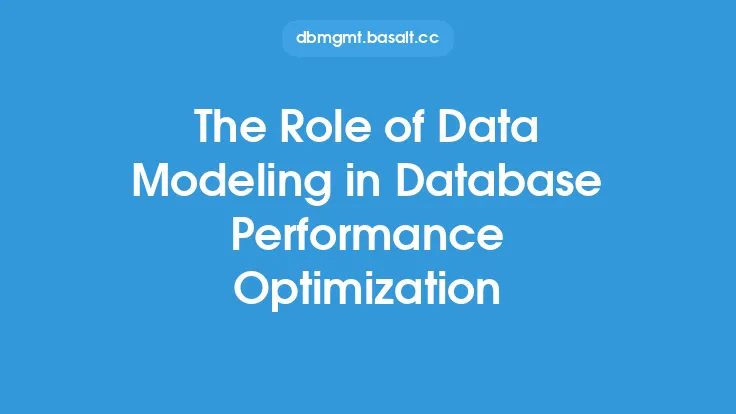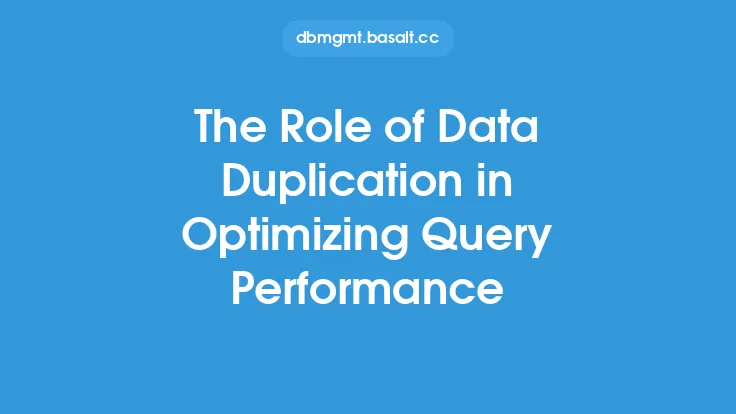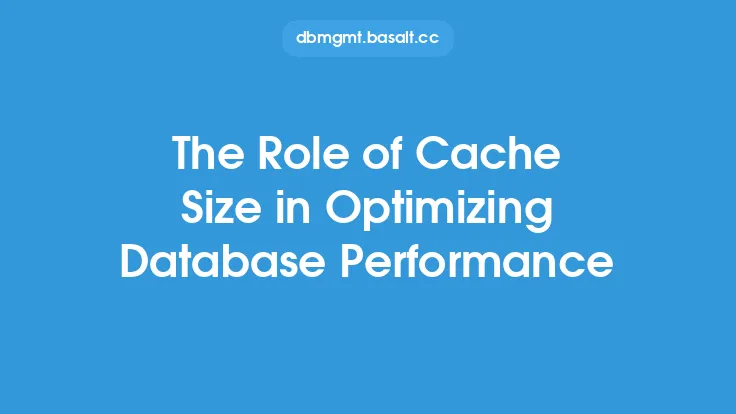Data aggregation plays a crucial role in improving query performance, particularly in large and complex databases. By reducing the amount of data that needs to be processed, aggregated data can significantly speed up query execution times, making it an essential technique in data denormalization strategies. In this article, we will delve into the details of how data aggregation improves query performance, the different types of data aggregation, and the best practices for implementing data aggregation in relational databases.
Introduction to Data Aggregation
Data aggregation is the process of combining multiple rows of data into a single row, typically using aggregate functions such as SUM, AVG, MAX, MIN, and COUNT. This technique is used to reduce the amount of data that needs to be processed, making it easier to analyze and query large datasets. Data aggregation can be performed at various levels, including row-level, column-level, and table-level aggregation. By aggregating data, databases can reduce the number of rows that need to be scanned, joined, and sorted, resulting in improved query performance.
Types of Data Aggregation
There are several types of data aggregation, each with its own strengths and weaknesses. The most common types of data aggregation include:
- Rollup aggregation: This type of aggregation involves combining multiple rows of data into a single row, using aggregate functions such as SUM and AVG.
- Drill-down aggregation: This type of aggregation involves breaking down aggregated data into more detailed data, using functions such as GROUPING SETS and CUBE.
- Grouping aggregation: This type of aggregation involves grouping data by one or more columns, using functions such as GROUP BY and HAVING.
- Window aggregation: This type of aggregation involves applying aggregate functions to a set of rows that are related to the current row, using functions such as ROW_NUMBER and RANK.
How Data Aggregation Improves Query Performance
Data aggregation improves query performance in several ways:
- Reduced data volume: By aggregating data, databases can reduce the amount of data that needs to be processed, resulting in faster query execution times.
- Improved indexing: Aggregated data can be indexed more efficiently, allowing databases to quickly locate and retrieve the required data.
- Reduced join operations: Aggregated data can reduce the number of join operations required, resulting in faster query execution times.
- Improved sorting and grouping: Aggregated data can be sorted and grouped more efficiently, resulting in faster query execution times.
Best Practices for Implementing Data Aggregation
To get the most out of data aggregation, it's essential to follow best practices when implementing it in relational databases. Some of the best practices include:
- Identify the right aggregation level: Identify the right level of aggregation for your data, based on the query patterns and data distribution.
- Use efficient aggregate functions: Use efficient aggregate functions such as SUM and AVG, instead of slower functions such as COUNT and MAX.
- Use indexing: Use indexing to improve the performance of aggregated data, particularly when using rollup and drill-down aggregation.
- Monitor and maintain: Monitor and maintain aggregated data regularly, to ensure that it remains up-to-date and accurate.
Technical Considerations
When implementing data aggregation, there are several technical considerations to keep in mind. Some of the key considerations include:
- Data types: Ensure that the data types used for aggregated data are compatible with the underlying data types.
- Null values: Handle null values carefully, to avoid errors and inconsistencies in aggregated data.
- Data distribution: Consider the data distribution when aggregating data, to avoid skewing the results.
- Query optimization: Optimize queries to take advantage of aggregated data, using techniques such as query rewriting and indexing.
Conclusion
Data aggregation is a powerful technique for improving query performance in relational databases. By reducing the amount of data that needs to be processed, aggregated data can significantly speed up query execution times, making it an essential technique in data denormalization strategies. By following best practices and considering technical considerations, databases can get the most out of data aggregation, resulting in improved query performance and faster decision-making.





